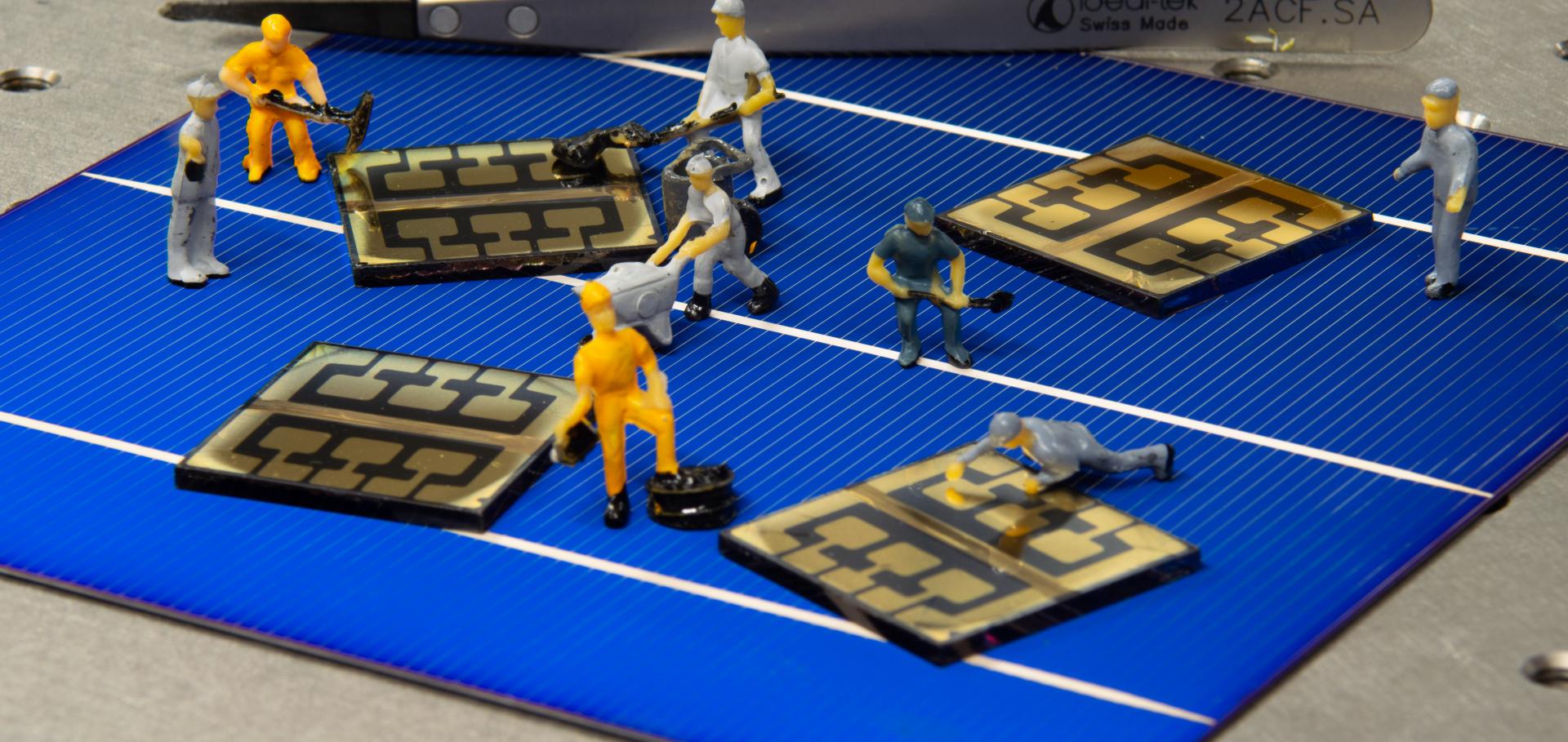Steering perovskite precursor solutions for multijunction photovoltaics
Nature Nature Research (2024)
Abstract:
Multijunction photovoltaics (PVs) are gaining prominence owing to their superior capability of achieving power conversion efficiencies (PCEs) beyond the radiative limit of single-junction cells<sup>1-8</sup>, where improving narrow bandgap tin-lead perovskites is critical for thin-film devices<sup>9</sup>. With a focus on understanding the chemistry of tin-lead perovskite precursor solutions, we herein find that Sn(II) species dominate interactions with precursors and additives and uncover the exclusive role of carboxylic acid in regulating solution colloidal properties and film crystallisation, and ammonium in improving film optoelectronic properties. Materials that combine these two function groups, amino acid salts, considerably improve the semiconducting quality and homogeneity of perovskite films, surpassing the effect of the individual functional groups when introduced as part of separate molecules. Our enhanced tin-lead perovskite layer allows us to fabricate solar cells with PCEs of 23.9, 29.7 (certified 29.26%), and 28.7% for single-, double-, and triple-junction devices, respectively. Our 1-cm<sup>2</sup> triple-junction devices show PCEs of 28.4% (certified 27.28%). Encapsulated triple-junction cells maintain 80% of their initial efficiencies after 860 h maximum power point tracking in ambient. We further fabricate quadruple-junction devices and obtain PCEs of 27.9% with the highest open-circuit voltage of 4.94 V. This work establishes a new benchmark for multijunction PVs.Reducing Nonradiative Losses in Perovskite LEDs Through Atomic Layer Deposition of Al2O3 on the Hole-injection Contact
University of Oxford (2023)
Abstract:
Experimental research data collected in laboratories at the Clarendon Laboratory, 2020-2022.Visualizing macroscopic inhomogeneities in perovskite solar cells
University of Oxford (2022)

